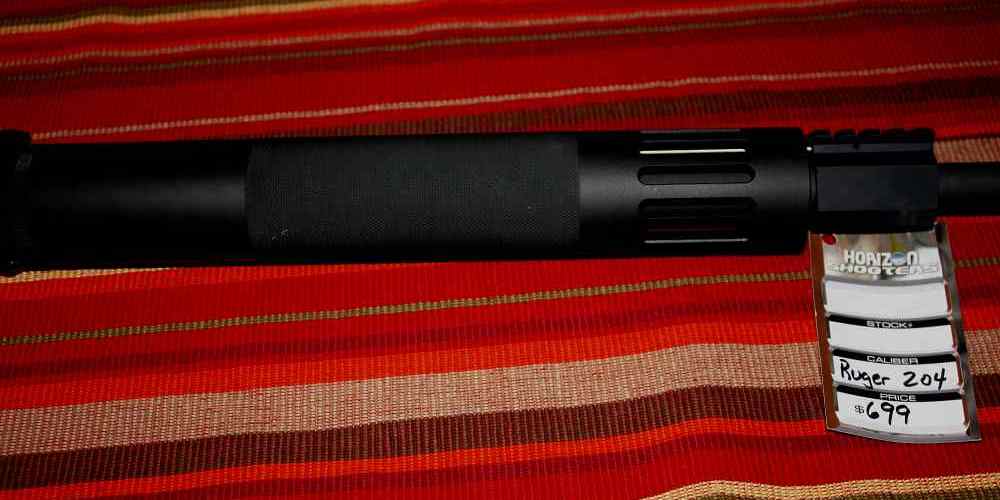“From humble beginnings to cutting-edge technology, the evolution of the AR15 upper receiver is a testament to innovation in firearms design.”
Early Origins of the AR15 Upper Receiver
The AR15 upper receiver has undergone significant changes and improvements since its inception. To understand the evolution of this crucial component, we must first look back at its early origins.
The AR15 upper receiver traces its roots back to the 1950s when Eugene Stoner developed the AR-10 rifle for the Armalite Corporation. The AR-10 featured an innovative design that utilized a lightweight aluminum alloy upper receiver, which helped reduce the overall weight of the rifle. This design was a departure from traditional steel receivers and set the stage for future developments in the AR platform.
In the early 1960s, the U.S. military adopted the M16 rifle, a derivative of the AR-15, as its standard-issue rifle. The M16 featured a redesigned upper receiver that incorporated a forward assist and a dust cover to improve reliability in combat conditions. These additions were crucial for ensuring the rifle’s performance in adverse environments and under high-stress situations.
As the AR platform gained popularity among civilian shooters, manufacturers began to experiment with different materials and designs for the upper receiver. One of the most significant developments was the introduction of the flat top upper receiver, which featured a Picatinny rail for mounting optics and accessories. This design allowed shooters to customize their rifles to suit their specific needs and preferences.
In recent years, advancements in manufacturing technology have enabled the production of upper receivers with tighter tolerances and improved durability. CNC machining has become the standard for producing upper receivers, allowing for greater precision and consistency in the manufacturing process. This has resulted in upper receivers that are more reliable and accurate than ever before.
Another notable development in the evolution of the AR15 upper receiver is the introduction of ambidextrous controls. Manufacturers have begun incorporating ambidextrous charging handles, bolt catches, and magazine releases into their upper receiver designs to cater to left-handed shooters and improve overall ergonomics. These features have made the AR platform more accessible and user-friendly for a wider range of shooters.
In addition to material and design improvements, the AR15 upper receiver has also seen advancements in the realm of optics and accessories. Many modern upper receivers come equipped with integrated backup iron sights, allowing shooters to quickly transition between different sighting systems. Additionally, manufacturers have developed specialized upper receivers for specific applications, such as long-range shooting or competition shooting.
Overall, the evolution of the AR15 upper receiver has been marked by a continuous drive for innovation and improvement. From its humble beginnings in the 1950s to the cutting-edge designs of today, the AR15 upper receiver has come a long way in terms of performance, reliability, and versatility. As technology continues to advance, we can expect to see even more exciting developments in the world of AR15 upper receivers.

Military Adoption and Modifications
The AR15 upper receiver has undergone significant changes and improvements over the years, particularly in the military sector. From its inception in the 1950s to its current state, the upper receiver has evolved to meet the demands of modern warfare.
One of the key milestones in the evolution of the AR15 upper receiver was its adoption by the United States military. In the early 1960s, the AR15 was selected by the U.S. Air Force as the M16 rifle, which featured a modified upper receiver. This marked the beginning of the AR15’s journey into military service.
As the AR15 gained popularity in the military, various modifications were made to the upper receiver to enhance its performance and reliability. One of the most notable changes was the introduction of the forward assist feature, which allowed soldiers to manually push the bolt into battery in case of a malfunction. This feature proved to be crucial in combat situations, where reliability is paramount.
Another significant modification to the AR15 upper receiver was the addition of a brass deflector. This feature redirected spent brass away from the shooter’s face, reducing the risk of injury and improving overall safety. Additionally, the introduction of a dust cover helped protect the internal components of the upper receiver from dirt and debris, further enhancing its durability.
In the 1980s, the U.S. military introduced the M4 carbine, a shorter and more compact version of the M16 rifle. The M4 featured a modified upper receiver with a shorter barrel and a collapsible stock, making it more versatile and suitable for close-quarters combat. This design proved to be highly effective in urban warfare scenarios, where maneuverability is key.
In recent years, advancements in technology have led to further improvements in the AR15 upper receiver. The introduction of lightweight materials such as aluminum and polymer has reduced the overall weight of the upper receiver, making it easier for soldiers to carry and maneuver in the field. Additionally, the use of advanced coatings and finishes has enhanced the upper receiver’s resistance to corrosion and wear, ensuring long-term reliability.
The AR15 upper receiver continues to evolve as new technologies and innovations emerge. From its humble beginnings in the 1950s to its current state as a reliable and versatile weapon system, the AR15 upper receiver has come a long way in meeting the demands of modern warfare.
In conclusion, the evolution of the AR15 upper receiver in the military sector has been marked by significant developments and modifications aimed at improving performance, reliability, and versatility. As technology continues to advance, we can expect to see further enhancements in the design and functionality of the AR15 upper receiver, ensuring that it remains a vital tool for soldiers on the battlefield.
Civilian Market Expansion and Customization
The AR15 upper receiver has undergone significant changes and improvements over the years, making it one of the most versatile and customizable components of the popular rifle platform. As the civilian market for AR15s expanded in the 1980s and 1990s, manufacturers began to offer a wide range of upper receiver options to meet the demands of shooters looking for increased performance and customization.
One of the key developments during this period was the introduction of flat top upper receivers, which featured a Picatinny rail along the top of the receiver for mounting optics and other accessories. This innovation allowed shooters to easily attach scopes, red dot sights, and other aiming devices to their rifles, improving accuracy and versatility in a variety of shooting scenarios.
Another important advancement in AR15 upper receiver design was the introduction of lightweight and enhanced performance models. Manufacturers began using materials such as aluminum and polymer to reduce weight and improve handling characteristics, while also incorporating features like improved heat dissipation and increased rigidity for enhanced accuracy and reliability.
As the demand for customization options grew, aftermarket companies began offering a wide range of accessories and upgrades for AR15 upper receivers. Shooters could now easily swap out barrels, handguards, and other components to tailor their rifles to their specific needs and preferences. This level of customization allowed shooters to create truly unique and personalized firearms that suited their individual shooting styles and preferences.
One of the most popular customization options for AR15 upper receivers is the addition of a free-floating handguard. These handguards attach directly to the barrel of the rifle, allowing for increased accuracy by eliminating any interference from the shooter’s grip on the handguard. Free-floating handguards also provide a more comfortable shooting experience by reducing heat transfer from the barrel to the shooter’s hand during extended shooting sessions.
In addition to handguards, shooters can also customize their AR15 upper receivers with different barrel lengths, gas systems, and muzzle devices to optimize performance for specific shooting applications. Whether it’s long-range precision shooting, close-quarters combat, or competition shooting, there are a wide range of options available to help shooters get the most out of their rifles.
The evolution of the AR15 upper receiver has been driven by the demands of shooters looking for increased performance, versatility, and customization options. With advancements in materials, design, and manufacturing techniques, shooters now have more options than ever before to tailor their rifles to their specific needs and preferences.
In conclusion, the AR15 upper receiver has come a long way since its introduction, with manufacturers continually pushing the boundaries of design and performance to meet the demands of shooters in the civilian market. With a wide range of customization options available, shooters can now create truly unique and personalized rifles that suit their individual shooting styles and preferences. Whether it’s for hunting, competition shooting, or self-defense, the AR15 upper receiver offers shooters a versatile and customizable platform that continues to evolve and improve with each passing year.
Advancements in Materials and Manufacturing Techniques
The AR15 upper receiver has undergone significant changes and improvements over the years, thanks to advancements in materials and manufacturing techniques. These developments have not only enhanced the performance and durability of the rifle but have also made it more versatile and customizable for users.
One of the key advancements in materials for the AR15 upper receiver is the use of aluminum. Early models of the AR15 upper receiver were typically made from steel, which was heavy and prone to rust. Aluminum, on the other hand, is lightweight and corrosion-resistant, making it an ideal material for the upper receiver. The use of aluminum has allowed for a reduction in weight, making the rifle easier to handle and carry for extended periods.
In addition to aluminum, advancements in manufacturing techniques have also played a significant role in the evolution of the AR15 upper receiver. One such technique is CNC machining, which allows for precise and complex shapes to be created with high accuracy. This has enabled manufacturers to produce upper receivers with tighter tolerances, resulting in improved accuracy and reliability.
Another important development in manufacturing techniques is the use of forged receivers. Forging involves shaping metal by applying pressure and heat, resulting in a stronger and more durable product. Forged upper receivers are known for their superior strength and longevity, making them a popular choice among AR15 enthusiasts.
The introduction of polymer upper receivers is another notable advancement in materials for the AR15. Polymer is a lightweight and durable material that is resistant to corrosion and impact. Polymer upper receivers offer a cost-effective alternative to aluminum and steel receivers, while still providing reliable performance.
Advancements in materials and manufacturing techniques have also led to the development of ambidextrous upper receivers. These receivers feature controls and charging handles on both sides of the rifle, making them suitable for left-handed shooters or those who prefer to switch hands while shooting. Ambidextrous upper receivers offer increased versatility and convenience for users.
Furthermore, the rise of modular upper receivers has revolutionized the customization options for the AR15. Modular upper receivers allow users to easily swap out components such as handguards, barrels, and optics, without the need for specialized tools. This flexibility enables users to tailor their rifle to their specific needs and preferences, whether it be for hunting, competition shooting, or tactical applications.
Overall, advancements in materials and manufacturing techniques have greatly improved the AR15 upper receiver, making it more reliable, durable, and versatile than ever before. Whether you are a seasoned shooter or a novice enthusiast, the evolution of the AR15 upper receiver offers something for everyone. With continued innovation and technological advancements, the future of the AR15 upper receiver looks bright, promising even more exciting developments to come.
Future Trends and Innovations in AR15 Upper Receivers
The AR15 upper receiver has undergone significant evolution over the years, with various historical developments shaping its design and functionality. From its origins as a military rifle to its widespread use in civilian and law enforcement applications, the AR15 upper receiver has become a versatile and customizable platform for firearm enthusiasts.
One of the key historical developments in the evolution of the AR15 upper receiver was the adoption of the direct impingement gas system. This system, which was first introduced in the original AR15 design by Eugene Stoner, uses gas pressure from the fired round to cycle the action and chamber a new round. This design has been widely adopted in modern AR15 upper receivers, as it provides reliable and consistent performance in a wide range of conditions.
Another important development in the evolution of the AR15 upper receiver was the introduction of the flattop receiver design. This design features a Picatinny rail on top of the receiver, allowing for the easy attachment of optics, sights, and other accessories. The flattop receiver has become a popular choice among AR15 enthusiasts, as it provides increased versatility and customization options for their firearms.
In recent years, advancements in materials and manufacturing processes have further improved the performance and durability of AR15 upper receivers. For example, the use of lightweight and corrosion-resistant materials such as aluminum and polymer has helped to reduce the overall weight of the upper receiver without sacrificing strength or reliability. Additionally, advancements in CNC machining technology have allowed for tighter tolerances and improved fit and finish in modern AR15 upper receivers.
Looking towards the future, there are several trends and innovations that are likely to shape the evolution of AR15 upper receivers. One of the most notable trends is the increasing popularity of modular and interchangeable upper receiver designs. These designs allow users to easily swap out barrels, handguards, and other components to customize their firearms for different applications or preferences. This trend has been driven by the growing demand for versatility and adaptability in firearms, as well as advancements in manufacturing technology that make it easier to produce modular components.
Another trend in the evolution of AR15 upper receivers is the integration of advanced optics and electronics. Many modern AR15 upper receivers are designed to accommodate red dot sights, holographic sights, and other electronic optics, providing users with enhanced accuracy and target acquisition capabilities. Additionally, some manufacturers are exploring the integration of electronic components such as rangefinders, ballistic calculators, and thermal imaging devices into the upper receiver itself, further expanding the capabilities of the platform.
Overall, the evolution of the AR15 upper receiver has been driven by a combination of historical developments, advancements in materials and manufacturing processes, and emerging trends in firearm design. As technology continues to advance and consumer preferences evolve, we can expect to see further innovations in AR15 upper receiver design that will continue to enhance the performance and versatility of this iconic firearm platform.






